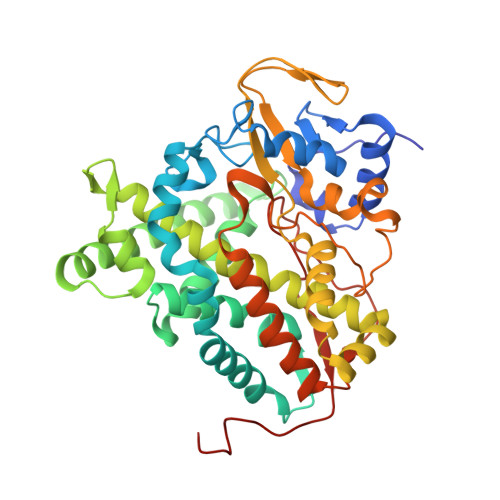Cholesterol ester oxidation by mycobacterial cytochrome p450.
Frank, D.J., Madrona, Y., Ortiz de Montellano, P.R.(2014) J Biol Chem 289: 30417-30425
- PubMed: 25210044
- DOI: https://doi.org/10.1074/jbc.M114.602771
- Primary Citation of Related Structures:
4TRI, 4UAX - PubMed Abstract:
Mycobacteria share a common cholesterol degradation pathway initiated by oxidation of the alkyl side chain by enzymes of cytochrome P450 (CYP) families 125 and 142. Structural and sequence comparisons of the two enzyme families revealed two insertions into the N-terminal region of the CYP125 family (residues 58-67 and 100-109 in the CYP125A1 sequence) that could potentially sterically block the oxidation of the longer cholesterol ester molecules. Catalytic assays revealed that only CYP142 enzymes are able to oxidize cholesteryl propionate, and although CYP125 enzymes could oxidize cholesteryl sulfate, they were much less efficient at doing so than the CYP142 enzymes. The crystal structure of CYP142A2 in complex with cholesteryl sulfate revealed a substrate tightly fit into a smaller active site than was previously observed for the complex of CYP125A1 with 4-cholesten-3-one. We propose that the larger CYP125 active site allows for multiple binding modes of cholesteryl sulfate, the majority of which trigger the P450 catalytic cycle, but in an uncoupled mode rather than one that oxidizes the sterol. In contrast, the more unhindered and compact CYP142 structure enables enzymes of this family to readily oxidize cholesteryl esters, thus providing an additional source of carbon for mycobacterial growth.
Organizational Affiliation:
Department of Pharmaceutical Chemistry, University of California, San Francisco, California 94158-2517.

















